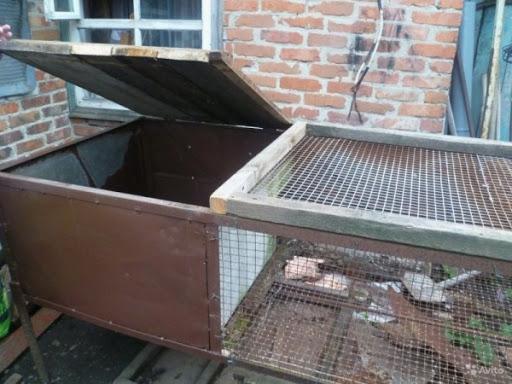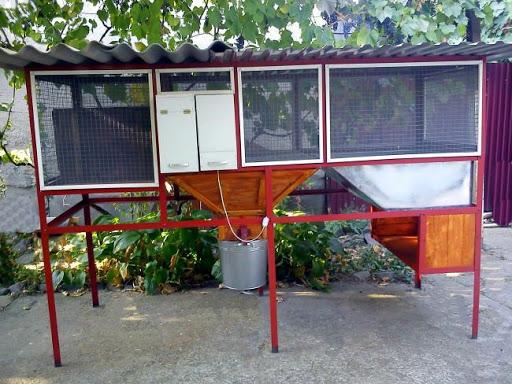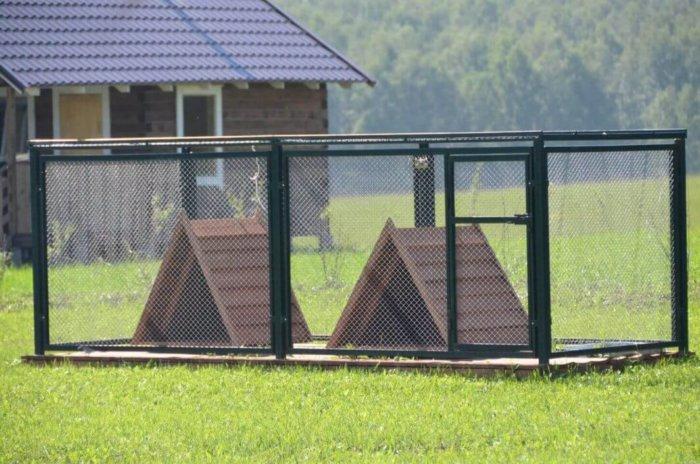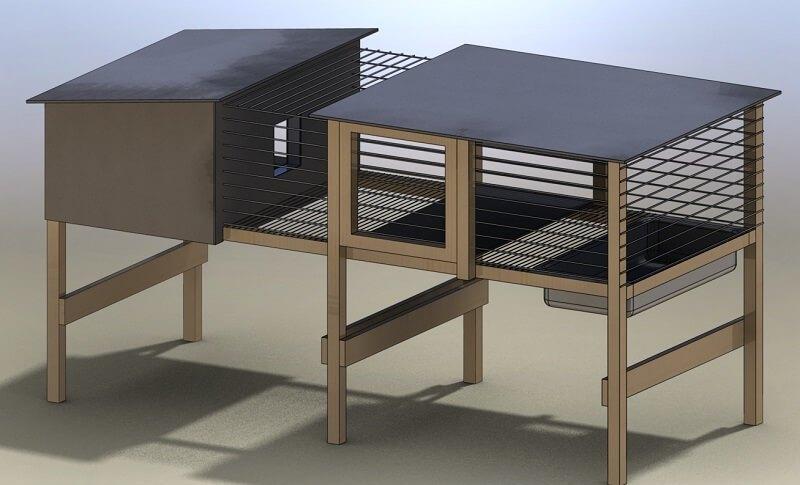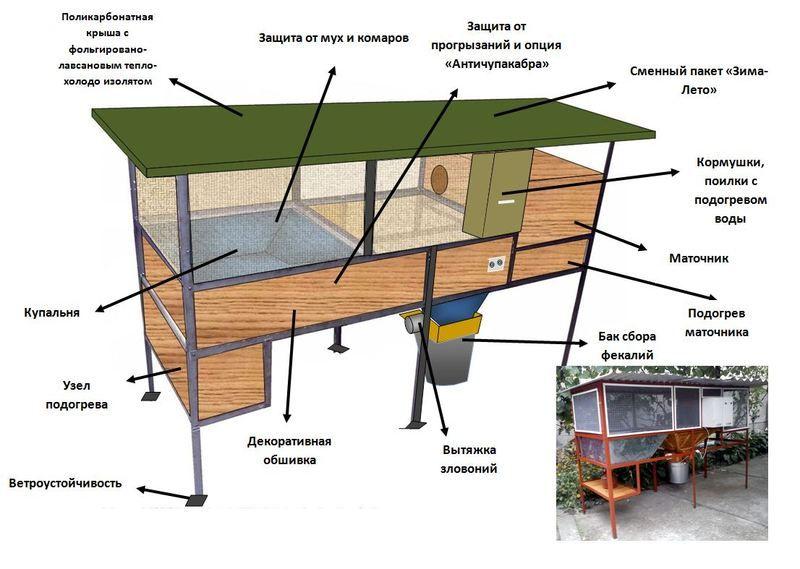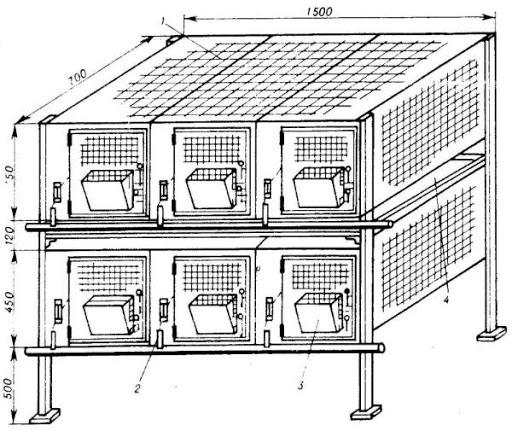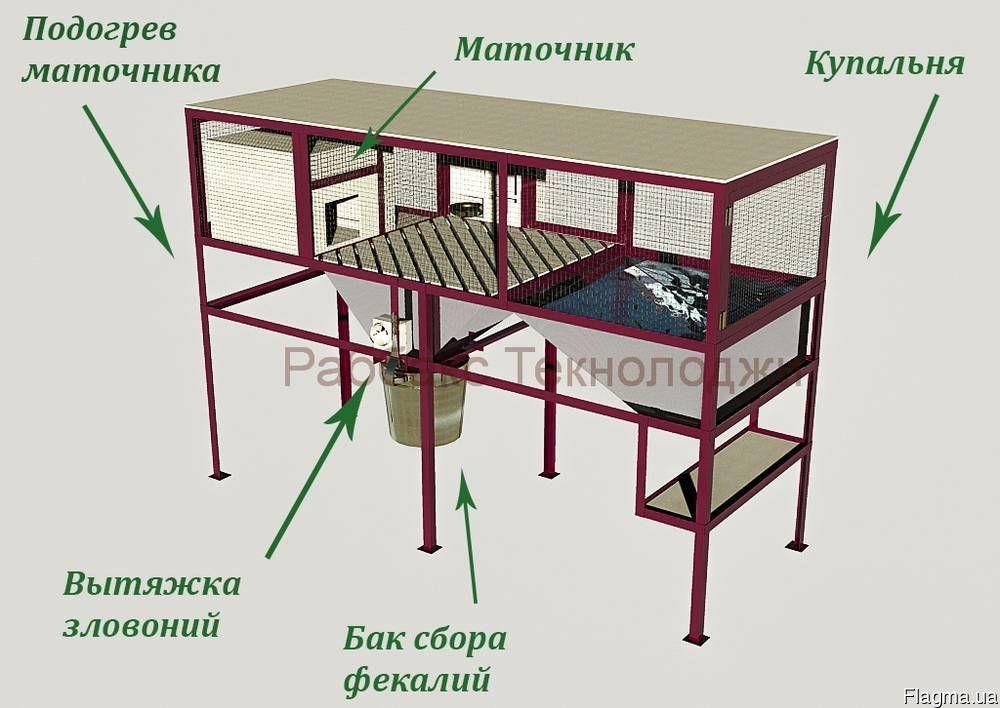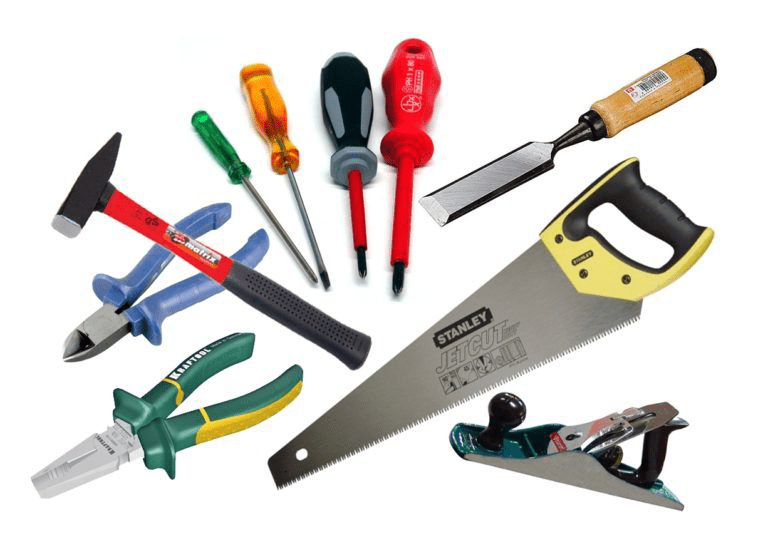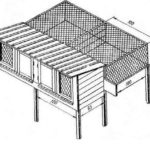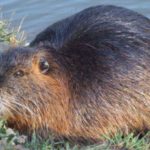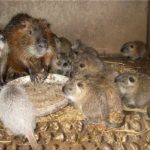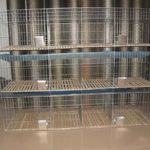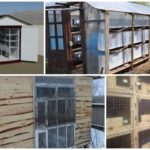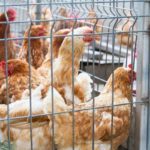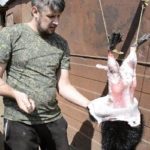Nutria are often kept on private farms. The animals have beautiful, valuable fur and tasty dietary meat. They are clean, smart, and watching them is interesting and educational. Before you get cute animals in your own backyard, you should take care of housing for them. Today we have a detailed discussion about the existing types of cells for nutria.
- Basic requirements for nutria cages
- Types and features
- For summer maintenance
- Summer enclosures
- Permanent cells
- Design options
- Ground building
- Wooden portable house
- Structure combined with a barn
- Multi-tiered
- Pen for young animals
- Other options
- Recommendations for selection
- How to make a cage with your own hands at home
- Required materials and tools
- Preparing the cell frame
- Mesh installation
- Plywood layer and ceiling
Basic requirements for nutria cages
These rodents are unpretentious in keeping, but can easily chew through a wooden cage. Therefore, the main requirements for a house for animals are: strength and space. Metal meshes with small cells or a metal lattice are suitable for making cages. This way the animals will have enough fresh air, there will be no opportunity to escape, and the owner will have the opportunity to observe the pets. Each animal requires 0.5-0.6 square meters of space.
A cage for a family should be at least 2.5 square meters. If it is needed for keeping animals in winter, then it is made warm; summer versions of the houses are lighter, without insulation. You can make the lightweight structure collapsible and move it to a warm barn with the onset of cold weather. It is advisable to make a house with a swimming pool; nutria love water very much, they need it for full development and health.
Types and features
Cages, depending on the climate in which the animals are kept, are divided into stationary, insulated and non-insulated options. Lightweight cages can be moved into the shed or yard, depending on weather conditions.
For summer maintenance
In the southern regions, animals are kept in light metal cages without insulation. This is a frame made of metal tubes, on which a strong metal mesh is stretched. Such houses are strong, durable, easy to clean and disinfect. The only drawback is that they are cold and are not suitable for regions with harsh climates.
The floor of the house is also made of mesh; on the outside, under the cage, a tray is placed to collect waste. The cells of the floor mesh are small so that animals do not injure their paws.The side and back walls can be made of metal, but flat slate, which does not rot, does not absorb moisture, and is not chewed by animals, is more practical.
The width of the structure is calculated so that the owner can reach the farthest corners of the house with an outstretched arm. The roof is made of corrugated slate, plywood, and metal sheets. It should be removable to make it convenient to clean the cage.
The houses are also made of wood, metal barrels, slate and brick. They are placed indoors or under a canopy to protect animals from cold and drafts. In the northern regions, animals are kept in insulated sheds year-round. The cage doors are equipped with a strong lock; nutria are smart animals; they are able to open the cage and escape.
Summer enclosures
In the summer they contain families of rodents consisting of 1 male and 4 females.
Important: several males do not live in one room; they do not get along well with each other.
The enclosures are made spacious, the area is fenced with a net dug into the ground 30-40 centimeters. The floors are concreted, one wall is left with mesh, the other is covered with flat slate. Then the nutria will be able to bask in the sun and rest from the heat in the shade. A swimming pool for animals is equipped in the enclosure. The height of the enclosure is at least 1 meter. There are several of them, separating families from pregnant females or young animals.
Houses are installed in it so that animals can hide from bad weather. The houses are made of wood, the inside is covered with mesh or covered with slate so that the nutria do not gnaw the structure.
Permanent cells
In warm regions, permanent cages are constructed from bricks, stones or blocks. The side and rear walls of the structure are made of brick; in the front part there is a lattice made of reinforcement and a door.Such a cage is warmer than a metal one, but it cannot be moved, so such housing for animals is installed in the complete absence of cold weather in the region.
Design options
The house should be comfortable for animals; the strength and durability of the structure are also important for the owner.
Ground building
An enclosure, or ground-based building, is the most optimal housing for nutria. Spaciousness, the opportunity to walk, and the presence of a swimming pool are ideal conditions for animals.
For a family of 5 individuals, a house made of brick, concrete or stone is built in an enclosure:
- length - 1.0-1.2 meters;
- width - 0.8-0.9 meters;
- front height - from 0.7 to 1.0 meters;
- the height of the rear wall is 0.5-0.7 meters.
The inside of the house is divided into 2 halves: for resting and feeding. When the number of livestock is large, several buildings are built. The length of the enclosure is 2.7-3 meters, width - 0.8-0.9 meters. For ease of work, first draw drawings of the enclosure indicating all dimensions. The roof is made removable, made of slate, plywood, metal.
Wooden portable house
It can be installed outdoors or brought indoors in cold weather. Such a cage will be unprofitable if there are a large number of animals, but at the initial stage of breeding it can be used. For the cage, choose durable wood.
The inside of the cage walls is protected with mesh or slate. The floor of the cage is made of mesh, under which a tray is placed. The front part with the door is made of mesh. It is not profitable to make a ceiling made of wood; wood quickly rots when the urine and feces of animals evaporate. A metal sheet or slate is used for the ceiling. Housing is divided into 2 compartments. Feeders are located in 1, nutria live in 2.
Structure combined with a barn
With this type of housing, the nutria are located in a barn; if necessary, they independently enter the enclosure, closely attached to one of the walls, through a hole made. In cold weather, the hole is plugged, blocking access to frosty air into the room. The aviary is also mounted from mesh. Inside the barn, the animal compartment is fenced with a lattice or mesh.
Multi-tiered
Multi-tiered structures significantly save space and are used for large numbers of animals or for young animals. The frame of the cage is made of metal or wood, the base is a metal mesh or lattice made of reinforcement. The cages are placed one on top of the other, with a distance of 10-15 centimeters between them, for easy cleaning of the tray.
Pen for young animals
In the summer, it is convenient to place young nutria in enclosures over which a canopy is mounted. A concrete floor is poured in the enclosure, metal or wooden posts are installed around the perimeter, on which a metal mesh is stretched. The floors are sprinkled with sand or sawdust. The enclosure is divided into 2 parts: in one the animals live, in the other there is a swimming area with a pool.
Other options
For nutria, you can use cages where rabbits lived, or purchase cages from the nearest fur farm that housed arctic foxes or foxes.
Recommendations for selection
When choosing the type of cage for nutria, you need to consider:
- weather conditions in the region;
- number of animals;
- structural strength;
- its durability.
This is why experienced nutria growers prefer metal cages. Animals cannot damage the structures, they do not rot from animal waste products, the cages are clearly visible and washable.For the winter, the structures are put away in a warm shed, and in the summer they are placed under a canopy to protect them from the sun and rain.
How to make a cage with your own hands at home
You can make a house for nutria yourself.
Required materials and tools
To set up a portable house you will need:
- beams made of durable wood;
- polystyrene foam for thermal insulation;
- metal mesh for walls;
- metal groove for the floor;
- flat and wave slate;
- plywood.
Tools needed:
- wood hacksaw;
- self-tapping screws;
- ruler;
- metal scissors.
Materials for manufacturing can be found on your own farm or at a scrap metal collection point.
Preparing the cell frame
First you need to prepare a drawing with the dimensions of the future house and the necessary details. Then a timber frame is made to size. It is necessary to make a base for the side walls, back and front.
Mesh installation
The mesh is stretched over a wooden frame, providing protection from the inside; the entire structure is fastened with self-tapping screws. All wooden parts of the cage are covered with mesh or flat slate on the inside so that rodents cannot damage them.
Plywood layer and ceiling
Plywood is laid on the inside of the mesh. The foam is tightly fixed to the plywood and covered with another sheet of plywood. The result is a durable and warm “layer cake”. The floor of the cage is made of metal perforations. The door is made of metal mesh. The roof is a sheet of slate or it is made of an opening metal one with a hinged joint. You can make a roof out of plywood and line the inside with metal.
A plastic or metal waste tray is installed under the cage, and stationary drinking bowls and feeders are installed inside.Of course, people who breed nutria and those who keep animals for fun have different goals. For keeping these animals at home, a cage purchased at a pet store is quite suitable, and for a personal yard, each owner will find from the many offered the best option for himself and provide his animals with comfortable living conditions.

